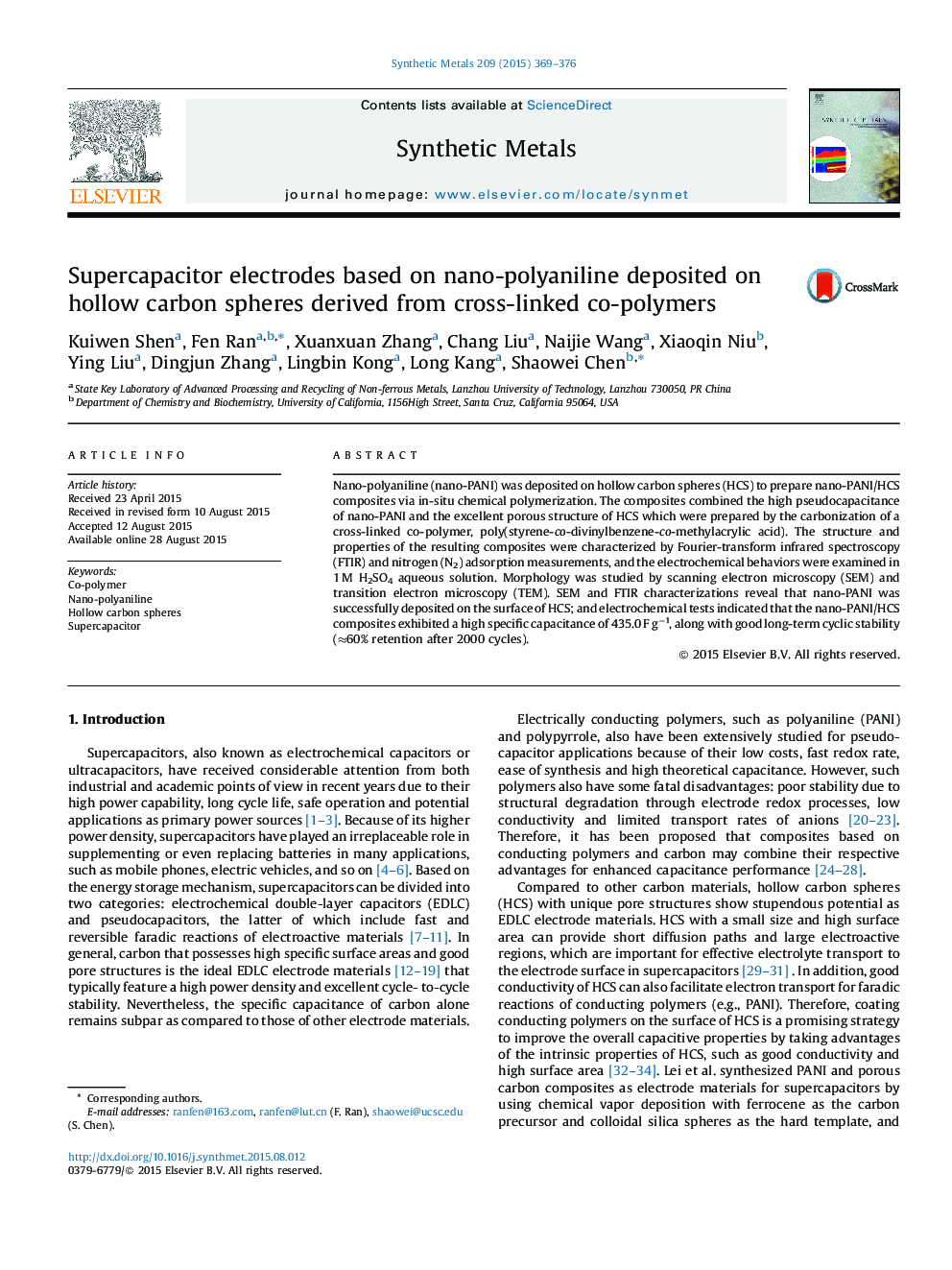| Article ID | Journal | Published Year | Pages | File Type |
|---|---|---|---|---|
| 1440516 | Synthetic Metals | 2015 | 8 Pages |
•The composites of nano-PANI/ HCS were prepared via in situ chemical polymerization.•The HCS was prepared using a soft template method and possess a hollow core and porous shell structure.•The maximum capacitance was 435 F g−1 and the specific capacitance remained 60% after 2000 cycles.•The effect of reaction time on the structure and performance of composites was investigated.
Nano-polyaniline (nano-PANI) was deposited on hollow carbon spheres (HCS) to prepare nano-PANI/HCS composites via in-situ chemical polymerization. The composites combined the high pseudocapacitance of nano-PANI and the excellent porous structure of HCS which were prepared by the carbonization of a cross-linked co-polymer, poly(styrene-co-divinylbenzene-co-methylacrylic acid). The structure and properties of the resulting composites were characterized by Fourier-transform infrared spectroscopy (FTIR) and nitrogen (N2) adsorption measurements, and the electrochemical behaviors were examined in 1 M H2SO4 aqueous solution. Morphology was studied by scanning electron microscopy (SEM) and transition electron microscopy (TEM). SEM and FTIR characterizations reveal that nano-PANI was successfully deposited on the surface of HCS; and electrochemical tests indicated that the nano-PANI/HCS composites exhibited a high specific capacitance of 435.0 F g−1, along with good long-term cyclic stability (≈60% retention after 2000 cycles).
